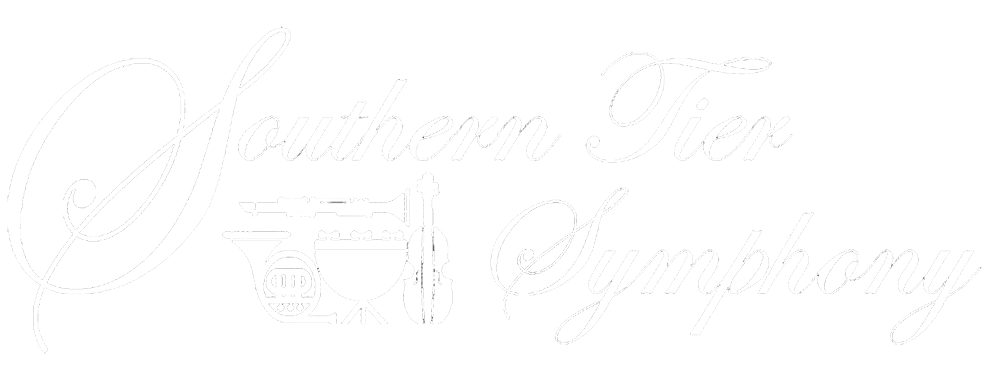Southern Tier Symphony Celebrates the Full Orchestral Sound
by Ed. Simone
The stage of the Regina A. Quick Center on St. Bonaventure's campus was crowded with musicians for last weekend's Southern Tier Symphony concert, with music director Benjamin Grow. All that power assembled for "Celebrating Symphony," the last concert in the Symphony's 20th season. Symphony here means not just the composition; but the act of creating pieces of orchestral music for a full symphony orchestra and all the creative collaboration that requires.
But the concert opened with an actual symphony, Felix Mendelssohn's Symphony No. 3 in A minor, known as the Scottish Symphony.
Inspired by a visit to an old Scottish castle, Mendelssohn worked on the symphony from 1829 to 1842, and it was premiered in the spring of that year. The symphony delivers the flavor of Scotts country tunes and reels and closes with a surprisingly rousing anthem.
Rousing anthems are the stuff of Celebrating Symphony's second half, devoted to music from stage and screen in arrangements by the Southern Tier Symphony's founding music director, John Whitney. It's a second half full of orchestral color and detail, with the STS's percussion section: John Landis, Cassie Hatch, Steph Newton and Brooke Skiba, along with tympanist Moses Howden, particularly and delightfully present.
The STS strings introduce us to Howard Shore's music for Lord of the Rings: The Fellowship of the Ring, with a melody Music Director Grow described as "haunting." That theme gives way to expansive passages from the STS brass and winds, and a wistful violin solo by concertmaster Kim Whitney that evokes a longing for the shire.
George Gershwin's American in Paris offers an interesting opportunity to hear something different from the original arrangement. Nothing is wanting, however, and the vibrant opening perspective of the flaneur George shines in evocative solos by trombonist Cameron Collar and trumpeter Cyril Bodnar. I didn't even miss the Parisian taxi horns.
Then it was back to the cinema with Harry Potter and the Chamber of Secrets, John Williams' second score for the seven-film series based on the immensely popular books by J. K. Rowling, followed. Darker than Sorcerer's Stone, Whitney's arrangement captures the suspense and danger of the story; but also the bumptious comedy of the sleuthing tweens Harry, Hermione and Ron. Paul Schlossman's oboe adds to the mystery, and when the soaring theme Harry Potter's Magical World finally breaks, the STS filled the Quick Center with magic of its own.
Whitney's Salute to Cole Porter swings four of the urbane master's best known tunes. It was lovely to hear these songs played by a full orchestra. Another Opening, Another Show; In the Still of the Night; Anything Goes and Night and Day are served up with an insouciance and elegance Porter would have appreciated.
The STS stays in the world of theater for a medley of tunes from My Fair Lady. Whitney has fun with the rhythm of Frederick Lowe's familiar songs ands some beautiful passages strings, brass and horns.
A medley of John Williams' music from The Empire Strikes Back closes the program with appropriately boisterous brass and several bangs. Rousing anthems indeed.
"Celebrating Symphony" leaves one with the realization that the presence of a regional orchestra with the commitment and collaborative talent of the Southern Tier Symphony and music director Benjamin Grow is certainly something to celebrate.



